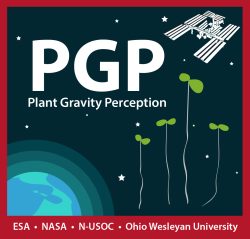Plant Gravity Perception (Space-13)
The Plant Gravity Perception mission, PGP, is the latest in a long line of biology experiments on the International Space Station to use European Space Agency’s European Modular Cultivation System (EMCS) and is set to launch in December 2017. Its primary aim is to investigate how plants sense and respond to gravity.
Gravity perception is important to plants because they need to send their roots downwards towards water and nutrients and their shoots upwards towards light. Plants are known to detect gravity using statoliths, which are small starch-filled packets that settle at the bottom of gravity-sensing cells. However, mutant plants lacking functional statoliths still show consistent (though reduced) responses to gravity, suggesting that there is another system for sensing gravity.
PGP will investigate the existence of a non-statolith gravity sensing system using the classic study organism Arabidopsis thaliana. Researchers will compare the growth of wild type plants that have statoliths and mutant plants that do not have statoliths. The plants will be grown on the ISS in microgravity, as well as in simulated gravity of varying levels created by a centrifuge, to allow a full exploration of how the plants detect and respond to different levels of gravity.
Beyond helping scientists untangle the workings of plant development at a fundamental level, this research could lead to improvements in crop plant breeding and in our ability to grow plants in space. Both on Earth and in space, crop efficiency depends on the number of plants that can be grown in a given area/volume, and thus depends on plant form – the shape in which a crop plant grows. Gravity perception and sensing is integral to plant growth and form, and so understanding the details of gravity perception could help researchers develop new, more efficient varieties of crop plants and improve yields on Earth and in space. Such improvements could be game-changers for long distance exploration missions, as having astronauts grow their own food would address a number of current obstacles, such as large launch volumes and the potential for food spoilage.
Project Team
Project Manager: Elizabeth Pane, NASA Ames Research Center
Project Scientist: Gioia Massa, Ph.D., NASA Kennedy Space Center
Mission Scientist: Gwo-Shing Sun, Ph.D., FILMSS, NASA Ames Research Center
Principal Investigator: S. Chris Wolverton, Ph.D., Ohio Wesleyan University
Learn More
See the Space Station Research Explorer for the Plant Gravity Perception mission.
See the Experiment Unique Equipment for the European Modular Cultivation System
See Seedling Growth-3 mission webpage
See Seedling Growth-2 mission webpage
See Seedling Growth-1 mission webpage






























